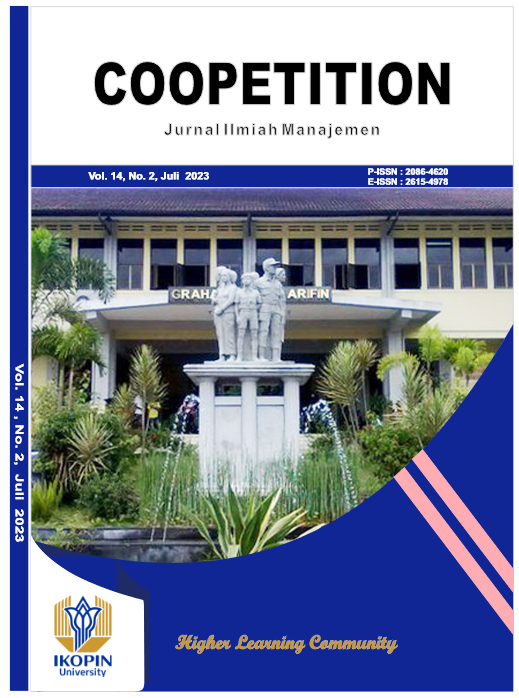Tantangan Kontemporer Pengembangan Sumber Daya Manusia Koperasi Industrial
DOI:
https://doi.org/10.32670/coopetition.v14i2.3161Keywords:
Contemporary Cooperative Institutions, Human Resource DevelopmentAbstract
In a competitive environment, employees of every organization are a key factor in business success. In various fields such as health, education, media, banking insurance, etc. Human resources play an important role in successful service delivery. Most service industries emphasize the absorption of human resources with the necessary qualifications, expertise, and practical basic training. However, the Cooperative does not have this privilege due to its current structure and functions. Cooperatives began to enter and develop in Indonesia. In Indonesia cooperatives were introduced by Patih R.Aria Wiria Atmaja in 1896. They have increasingly complex business mechanisms that require all modern management tools and techniques to succeed, but one of the obstacles to their growth is the lack of qualified personnel to manage business management in effective field. Recruiting, training, retaining the existing workforce and cultivating a culture of continuous learning are some of the challenges facing Cooperatives even today. Because the development of human resources (HR) is a key factor that determines the characteristics of a successful institution. Cooperatives also need to develop permanent members, management and especially employees. Therefore, in this study, an attempt was made to signal the need for HRD and identify contemporary challenges in the implementation of HRD activities in cooperatives.
Downloads
References
Achmad, S, R. (2006). Sistem Manajemen Kinerja. Jakarta: Gramedia. Pustaka utama.
Aggarawal, B. B., Kumar, S. & Bharti, A, C. (2003). Anticancer Potential of. Curcumin : Preclinical and Clinical Studies. Anticancer research: 23: 363.
Byars, Llloyd, L. & Rue, L. W. (2006). Human Resource Management (8th ed.). MCGraw-Hill: Irwin.
Dessler, G. (2011). Manajemen Sumber Daya Manusia. Jakarta: Indeks.
Gary, N. McLean. (2002). Human Resource Development as a Factor in the Inevitable Move to Globalization, Published By: Peter Lang AG,Vol. 180, Research in International Education: experience, theory & practice.
George, R. Terry dan Leslie, W, Rue. (2015). Dasar Dasar Manajemen, Jakarta: Bumi Aksara.
Gomes, F, C. (2002). Manajemen Sumber Daya Manusia. Yogyakarta: Andi Offset.
Hesselbein, F., Goldsmith, M., & Beckhard, R.. (1996) The Leader of The Future. New York. The Drucker Foundation.
Jasmin, I. and Mallikarjuna, P. (2014). Physicochemical Quality Evaluation of Groundwater and Development of Drinking Water Quality Index for Araniar River Basin, Tamil Nadu, India. Environmental Monitoring and Assessment, 186, 935-948.
Kalakotla Suman (2017). Human Resources Management and Practice in Banks of India, International Journal of Academic Research, ISSN: 2348-7666; Vol.4, Issue-2 (1).
Krishnaveni, R & Deepa, R. (2011). Business. The Indian IT/ITES industry has made a significant contribution to the country's economic growth. Deepa; Published.
Likert, R. (1932). A technique for the measurement of attitudes. Archives of Psychology.
Sedarmayanti. (2009). Sumber Daya Manusia dan Produktivitas Kerja. Bandung: Mandar Maju.
Downloads
Published
How to Cite
Issue
Section
License
Copyright (c) 2023 Coopetition : Jurnal Ilmiah Manajemen

This work is licensed under a Creative Commons Attribution 4.0 International License.


















